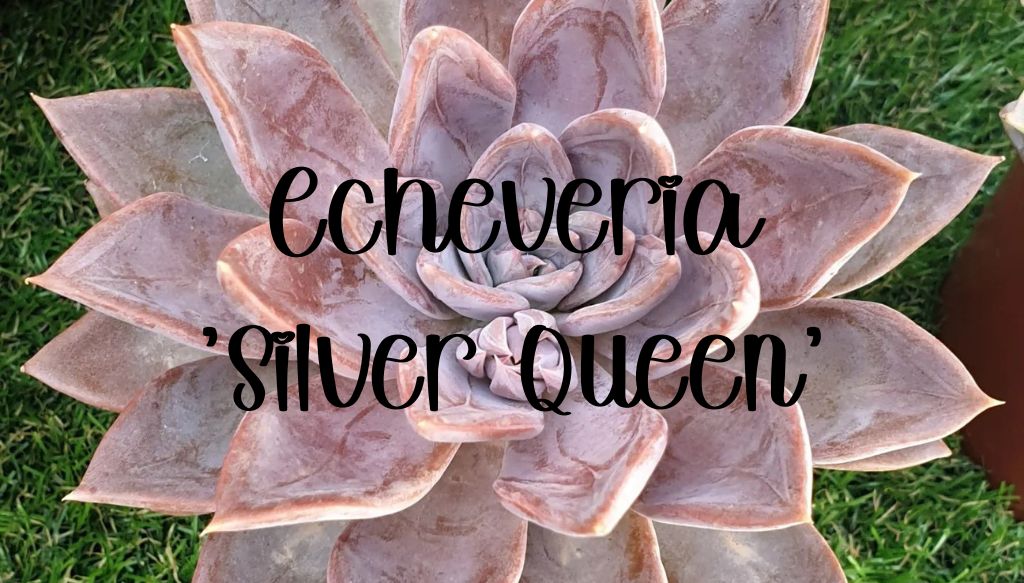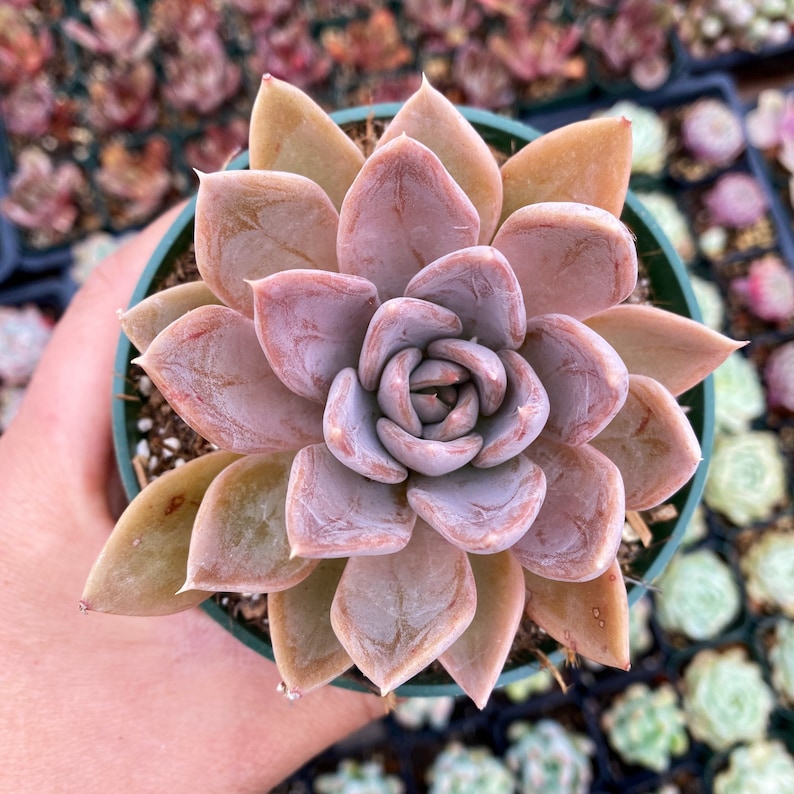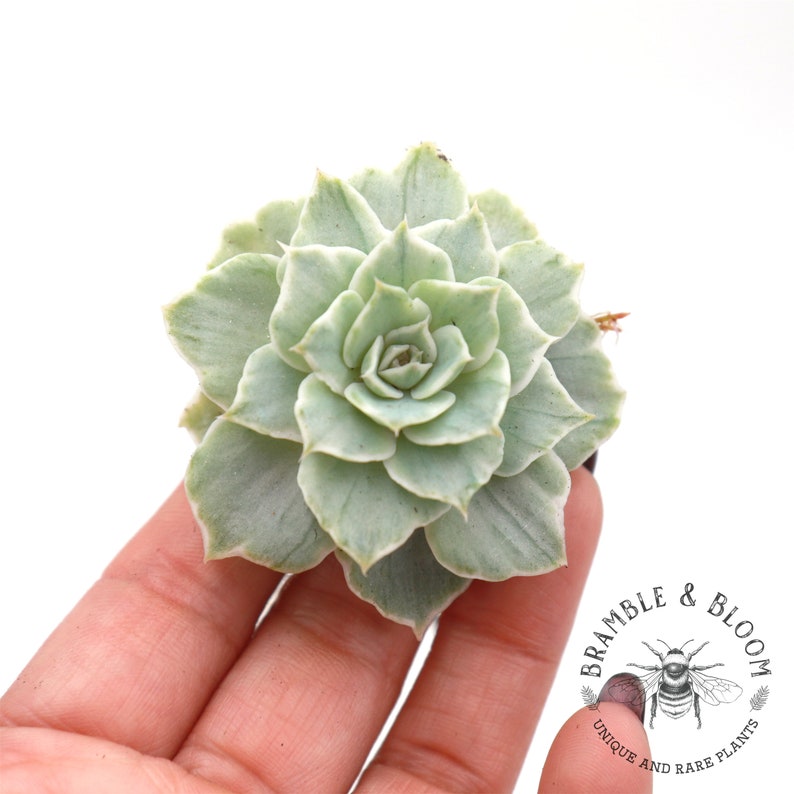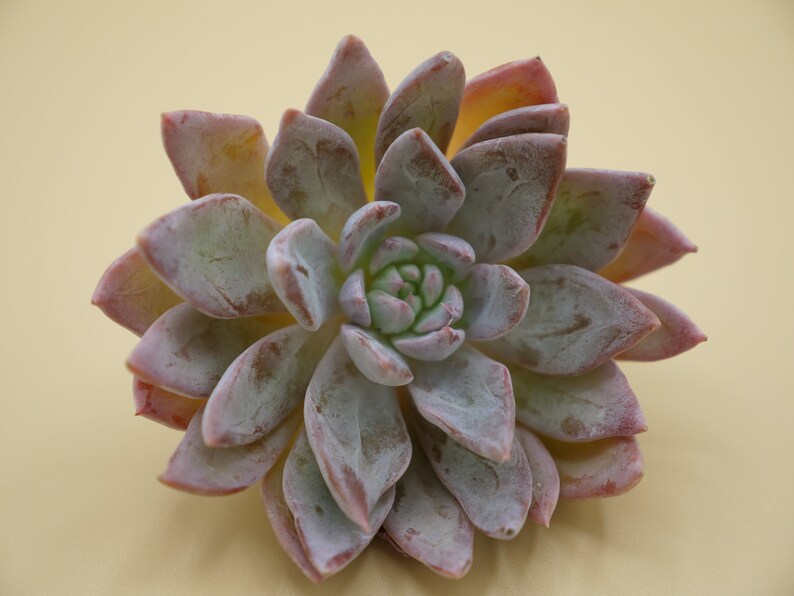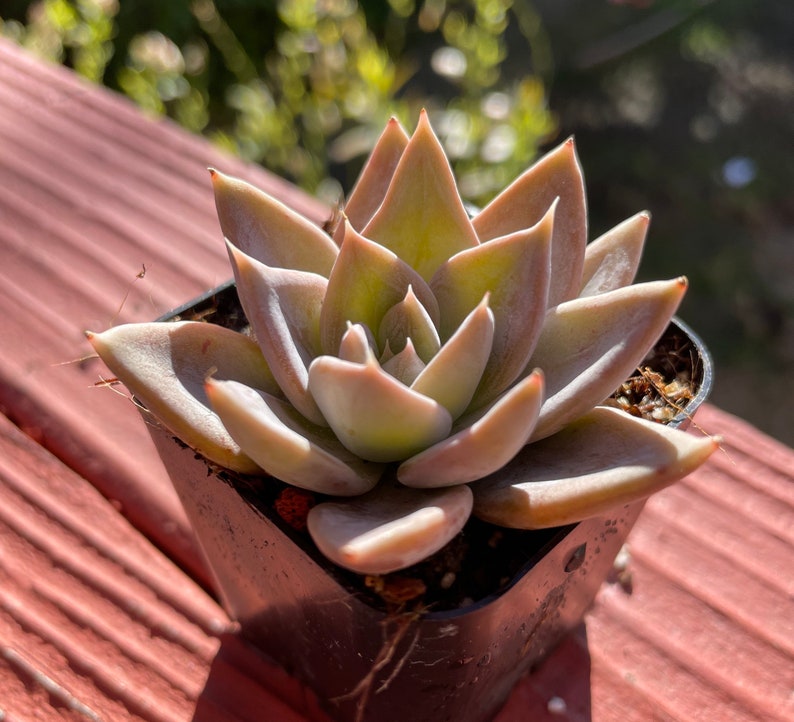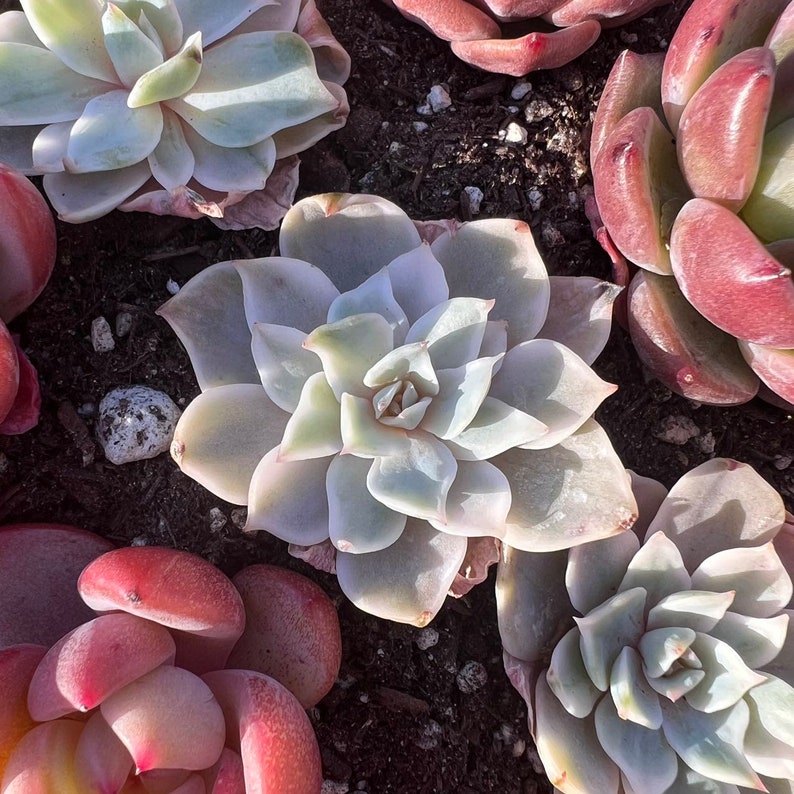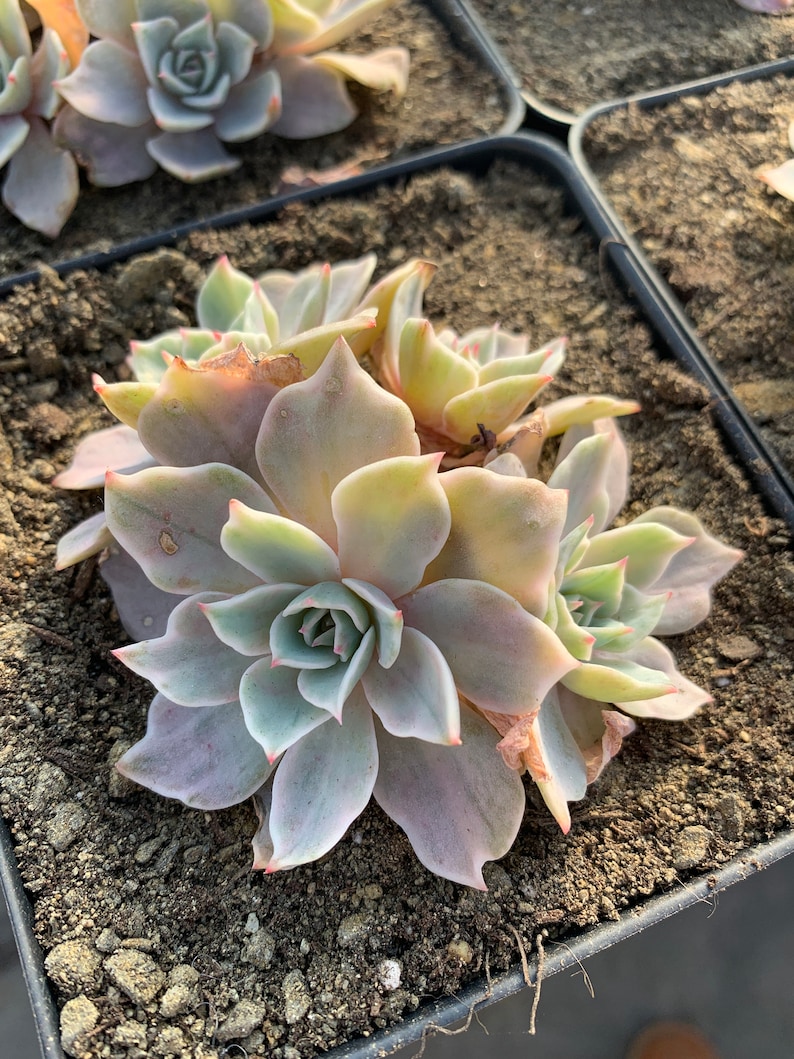Are you a fan of succulents and looking for a unique addition to your collection? Look no further! Echeveria ‘Silver Queen’ is a stunning, low-maintenance succulent that adds elegance to any indoor or outdoor garden. In this comprehensive care guide, I’ll share everything you need to know about growing and caring for this royal succulent.
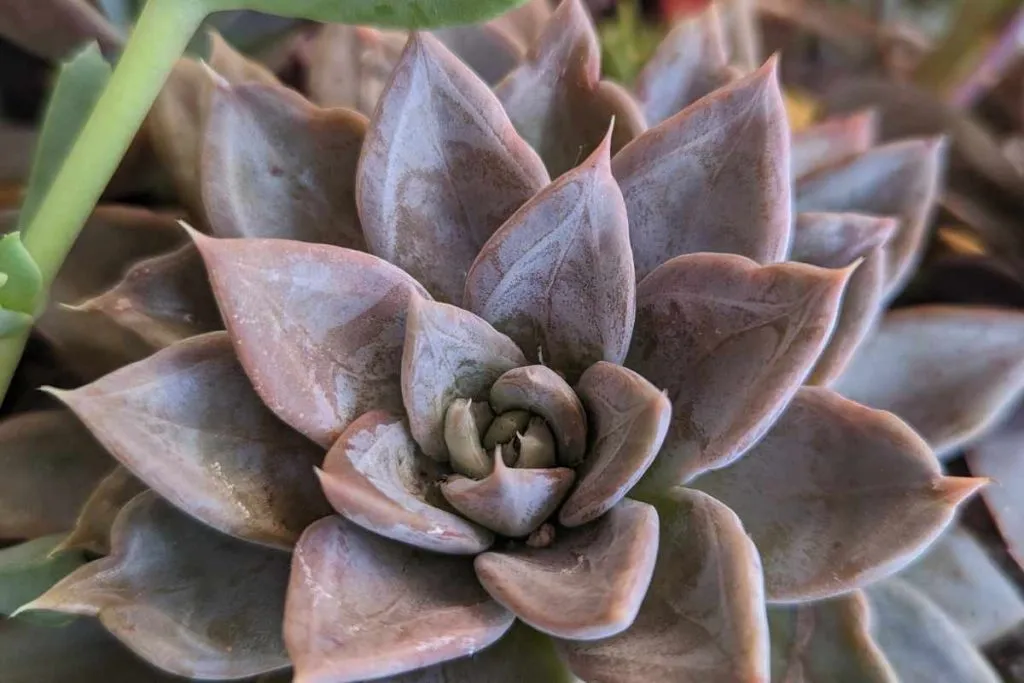
Dig in!
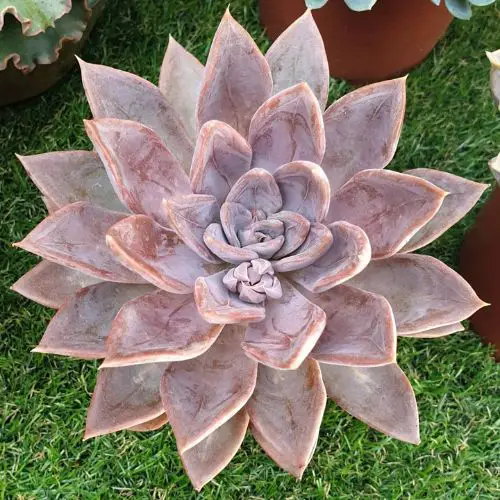
What is Echeveria ‘Silver Queen’?
Echeveria ‘Silver Queen’ is a hybrid succulent known for its eye-catching silvery-purple leaves that form a beautiful rosette shape. The tips of the leaves come to a dramatic point which is one of my favorite traits. This attractive plant is a cross between Echeveria craigiana and E. spec. (unknown) inheriting the best traits of both its parents. Its compact size, striking color, and minimal care requirements make it a popular choice among succulent enthusiasts.

Ideal Growing Conditions
Light Requirements
Like most succulents, Echeveria ‘Silver Queen’ thrives in bright, indirect sunlight. Provide your plant with at least 6 hours of filtered or morning sunlight daily to encourage healthy growth and maintain its vibrant color. Avoid placing it in direct afternoon sun, as this can cause the leaves to scorch.
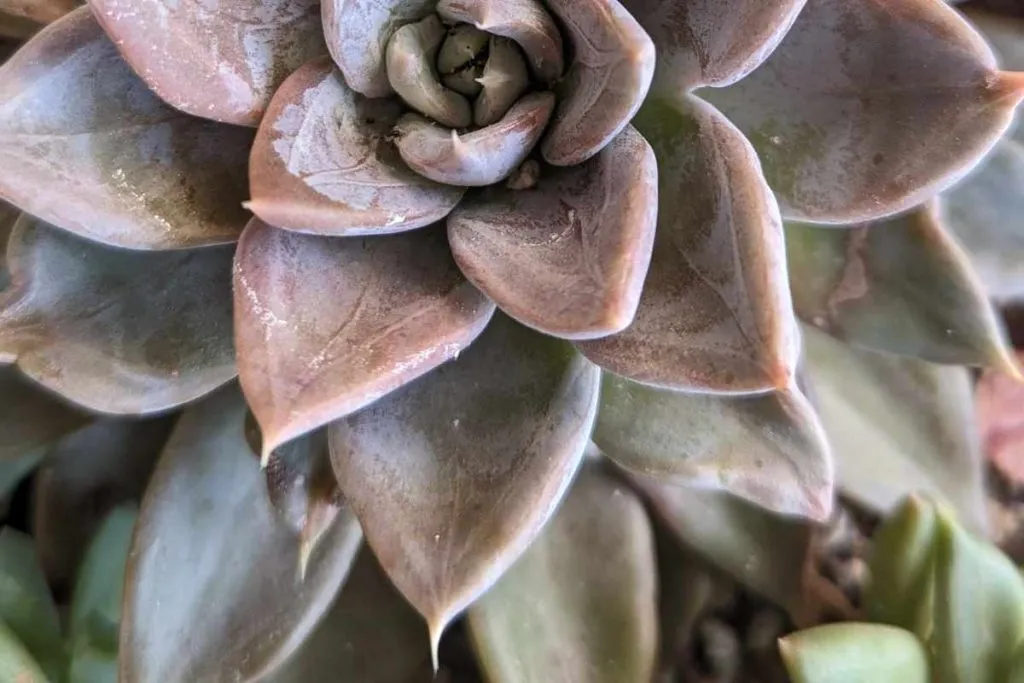
Temperature and Humidity
Echeveria ‘Silver Queen’ prefers a moderate temperature range between 60°F and 80°F (15°C and 27°C). It can tolerate brief periods of lower temperatures, but prolonged exposure to temperatures below 45°F (7°C) can damage the plant. This succulent is not a fan of high humidity, so ensure your space has good air circulation to prevent issues with rot and pests.
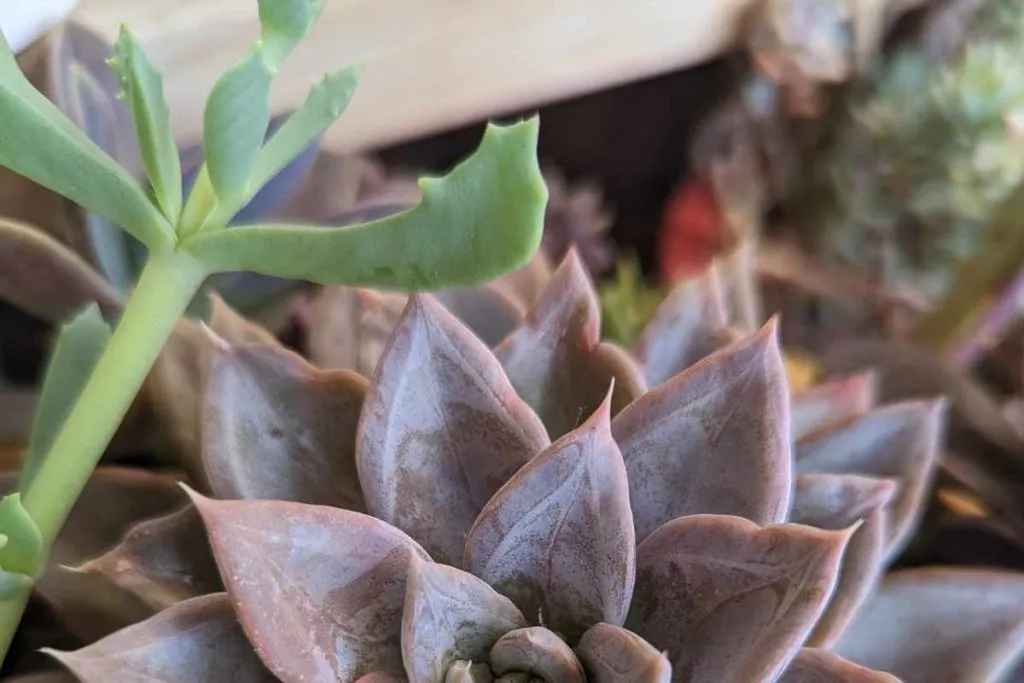
Soil Requirements
Well-draining soil is essential for Echeveria ‘Silver Queen’ to prevent root rot. Use a commercial succulent or cactus mix, or make your own by combining equal parts of potting soil, perlite, and coarse sand. This mix will provide the necessary drainage and aeration for your plant’s roots.
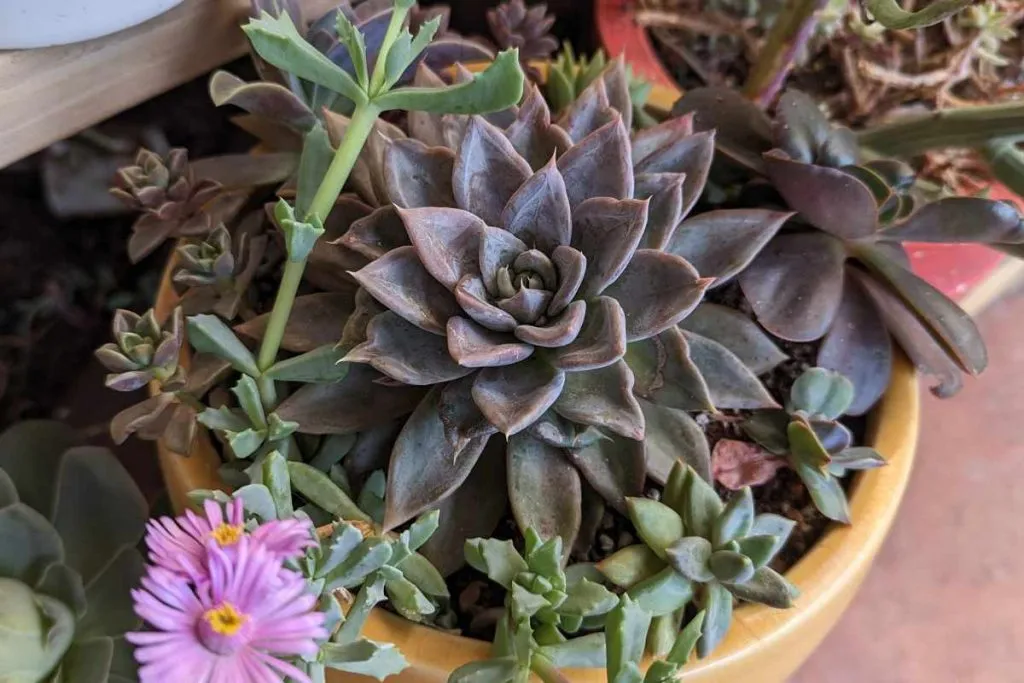
How to Plant and Repot Echeveria ‘Silver Queen’
Choosing a Container
Select a container with drainage holes to prevent standing water, which can lead to root rot. A shallow, wide pot is ideal, as it allows the roots to spread out and provides better airflow. Terracotta pots are an excellent choice, as they are porous and help control soil moisture.
Potting and Repotting
Gently remove your Echeveria ‘Silver Queen’ from its current pot, taking care not to damage the roots. Fill the new container with your chosen soil mix, leaving enough space for the root ball. Place the plant in the center and backfill with soil, pressing gently around the base. Wait a few days before watering to allow the roots to settle and prevent root rot.
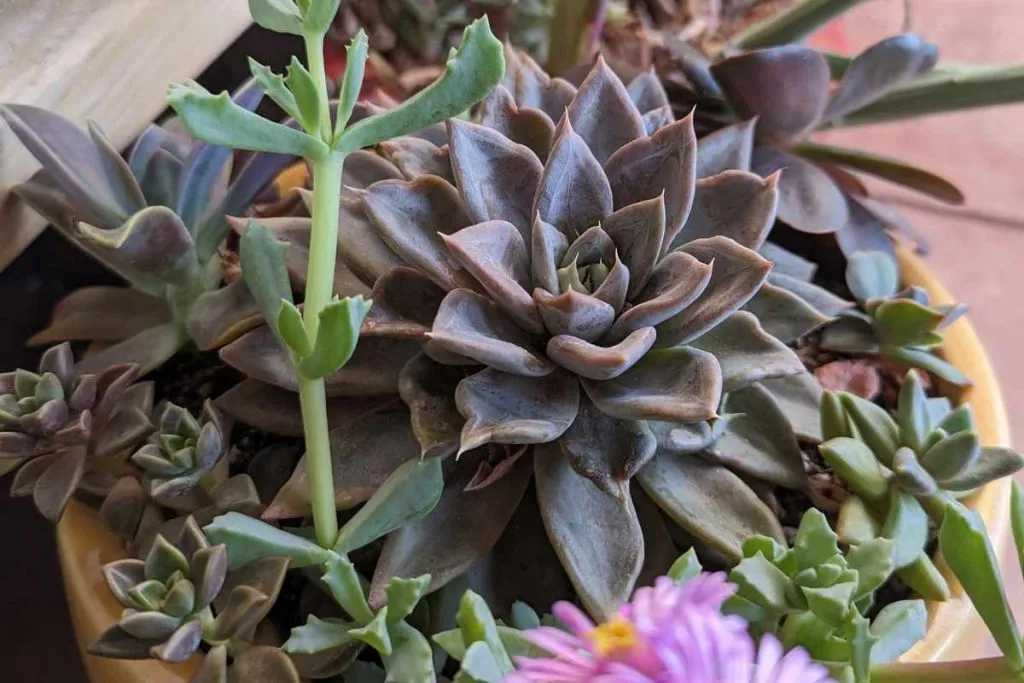
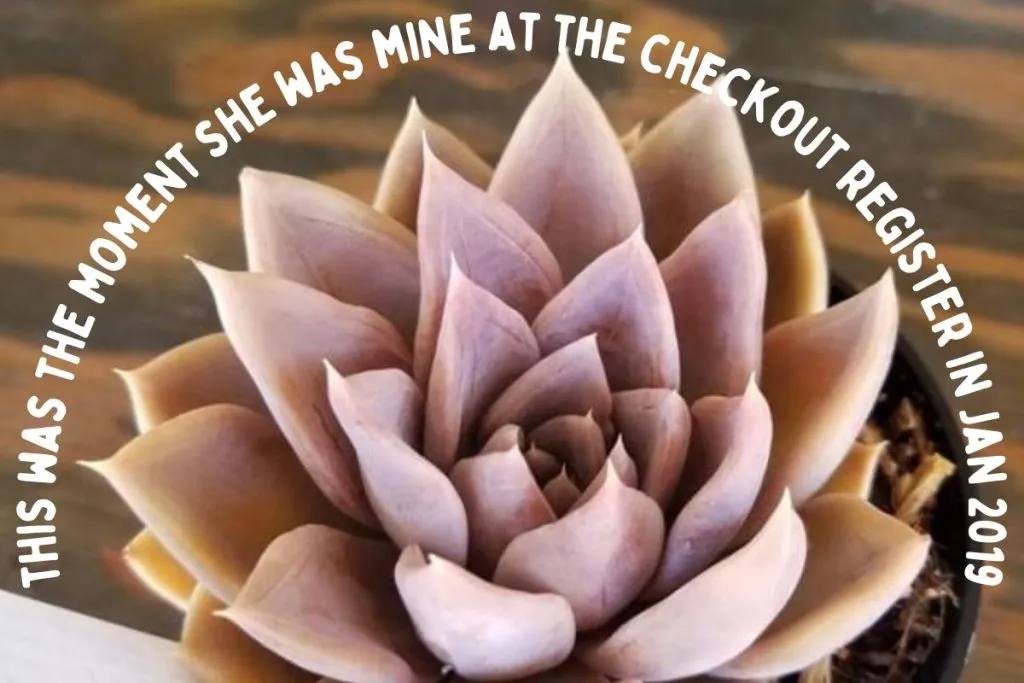
Caring for Echeveria ‘Silver Queen’
Watering
Water your Echeveria ‘Silver Queen’ sparingly, allowing the soil to dry out completely between waterings. This usually means watering every 2-3 weeks in the summer and once a month in the winter. Overwatering is the most common cause of problems, so always err on the side of underwatering.
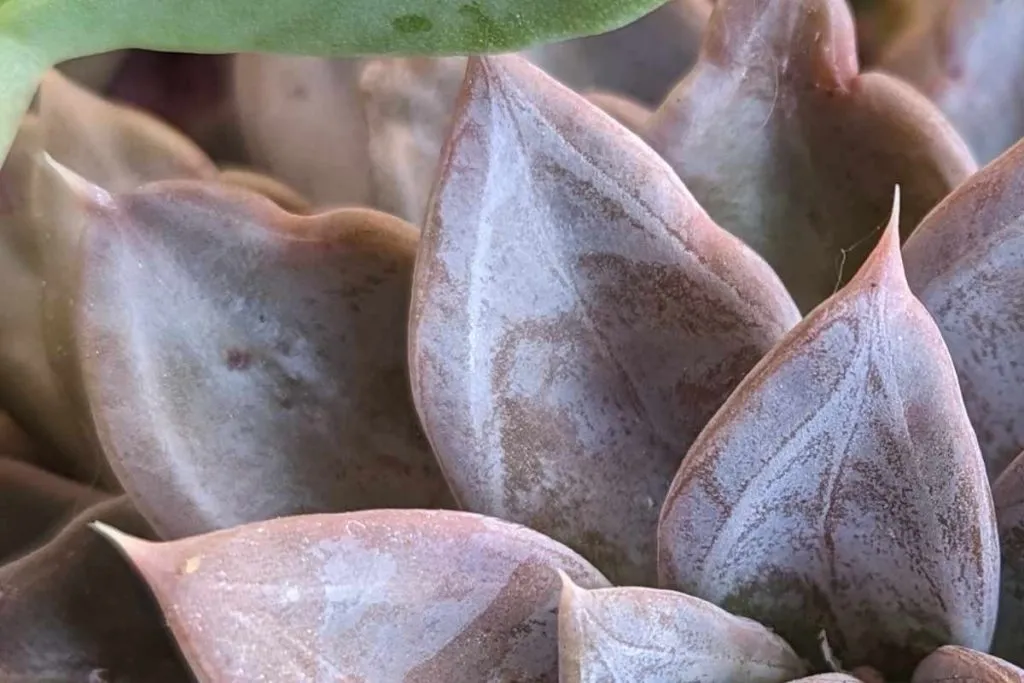
Fertilizing
Feed your Echeveria ‘Silver Queen’ with a balanced, water-soluble fertilizer once or twice during the growing season (spring and summer). Dilute the fertilizer to half the recommended strength to avoid overfeeding, which can cause leggy growth and weak leaves.

Succulent fertilizer available to purchase on Etsy.
Pruning and Grooming
Echeveria ‘Silver Queen’ requires minimal pruning. Simply remove any dead or damaged leaves to maintain the plant’s appearance and prevent pests and diseases. As the plant grows, it may produce a tall flower stalk with small, bell-shaped blooms. After the flowers fade, you can cut back the stalk to maintain the plant’s compact shape.
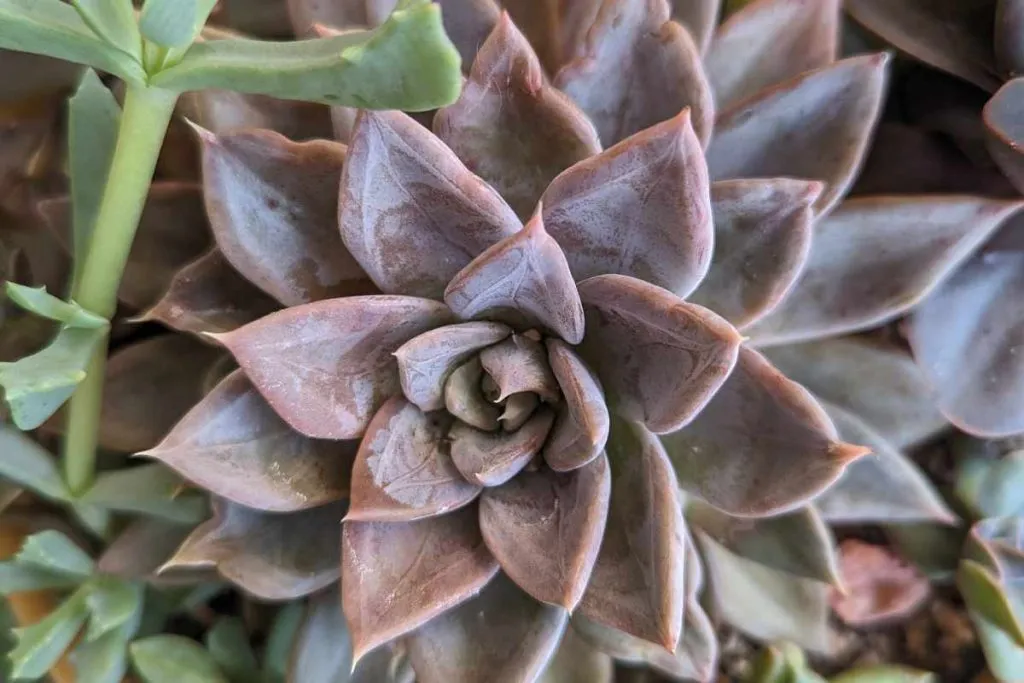
Common Problems and Solutions
Pests and Diseases
Echeveria ‘Silver Queen’ may attract mealybugs, spider mites, or aphids. If you notice these pests, treat your plant with an insecticidal soap or neem oil. To prevent diseases like powdery mildew or fungal infections, ensure your plant has good air circulation and avoid overwatering.
This regal lady is probably one of my mealy bug prone succulents. I soaked it in a systemic insecticide a couple of months ago so the damaged leaves are finally growing out.
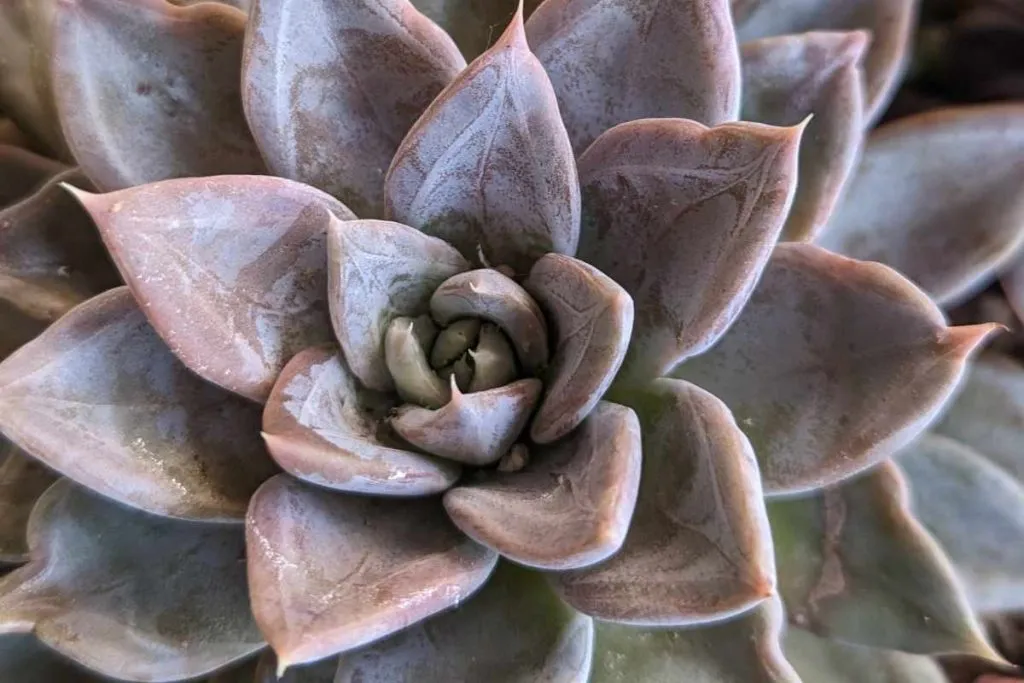
Overwatering and Root Rot
Root rot is a common issue caused by overwatering. If your Echeveria ‘Silver Queen’ shows signs of root rot, such as wilting or yellowing leaves, remove the plant from its pot and gently clean the roots. Trim away any black, mushy roots and let the plant dry out for a day or two before repotting in fresh soil.
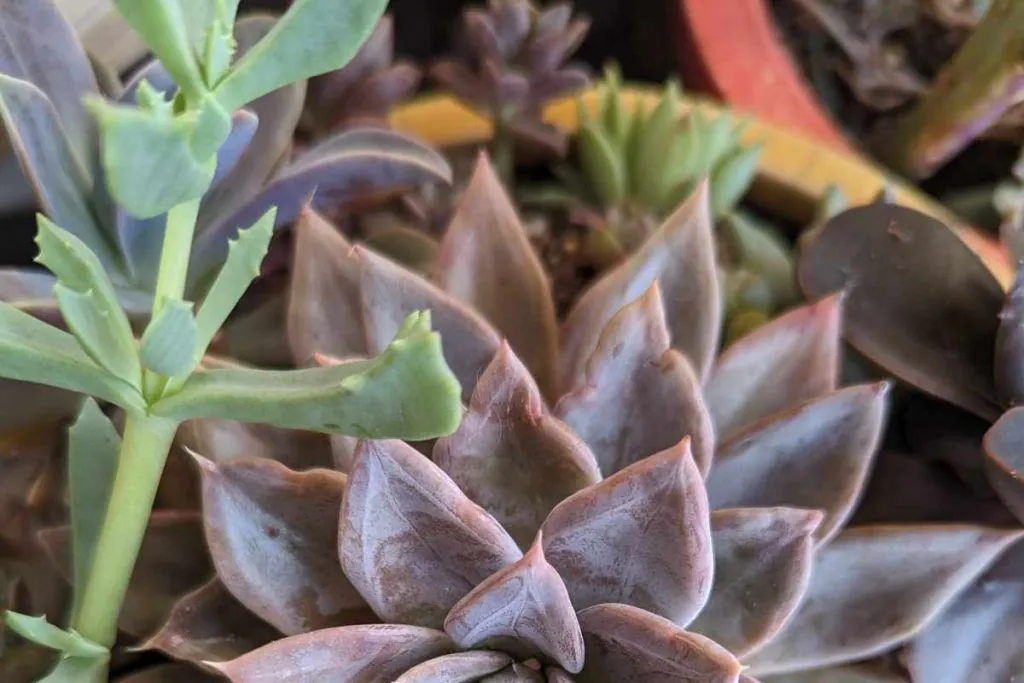
Leaf Drop and Shriveling
If your Echeveria ‘Silver Queen’ is losing leaves or they appear shriveled, it may be due to underwatering or insufficient light. Adjust your watering schedule and ensure your plant receives enough sunlight to promote healthy growth.
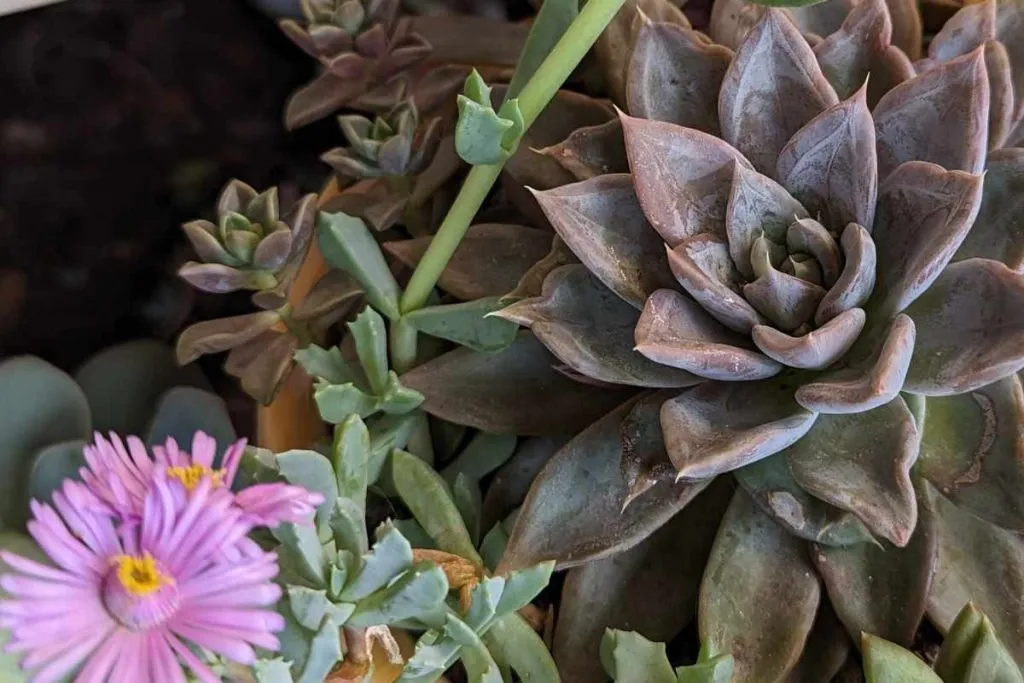
Propagation Techniques
Leaf Cuttings
To propagate Echeveria ‘Silver Queen’ from leaf cuttings, gently twist a healthy leaf from the base of the plant. Allow the leaf to callus for a few days before placing it on well-draining soil. Mist the soil regularly and wait for roots and a new rosette to form.
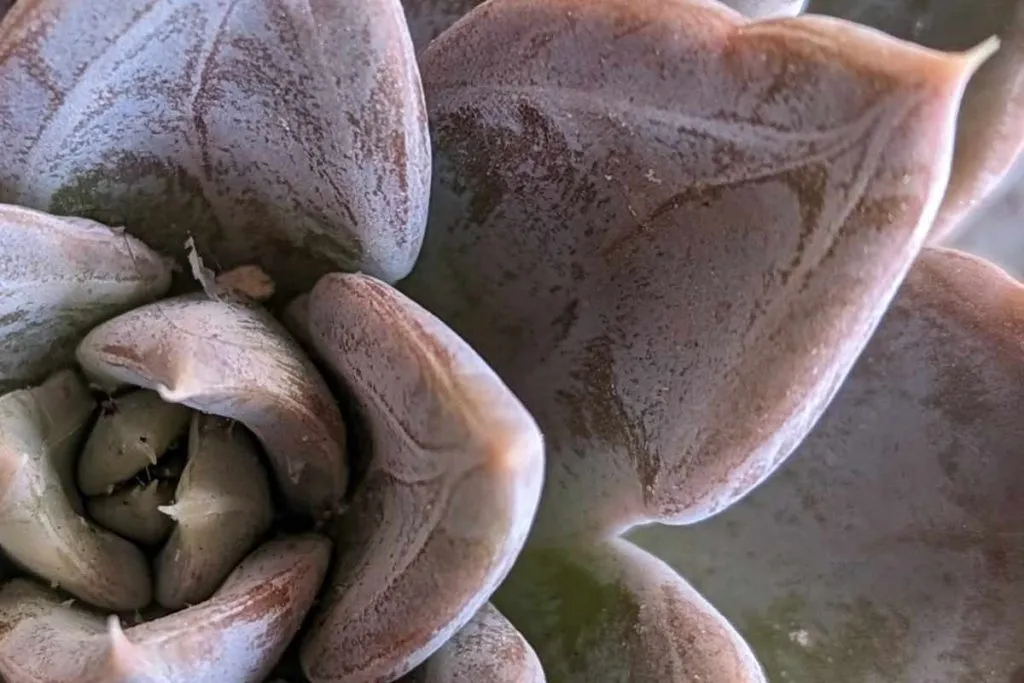
Offsets and Pups
Echeveria ‘Silver Queen’ may produce offsets, also known as pups, around the base of the plant. To propagate these, carefully remove the pup with a clean, sharp knife or your fingers. Allow the cut to dry for a day or two before planting in well-draining soil.
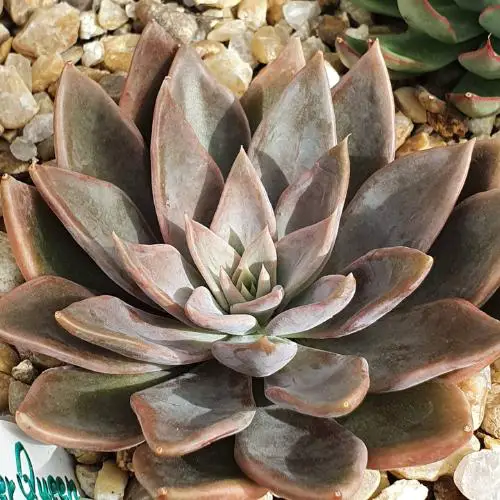
Seeds
Propagation from seeds is less common, but still possible. Sow Echeveria ‘Silver Queen’ seeds in well-draining soil and keep the soil moist but not wet. Provide bright, indirect light and maintain a consistent temperature of around 70°F (21°C) for optimal germination.
Echeveria ‘Silver Queen’ is a stunning, low-maintenance succulent that makes a beautiful addition to any garden or indoor space. By providing the right growing conditions, proper watering, and occasional grooming, you’ll enjoy the captivating beauty of this plant for years to come.
Frequently Asked Questions
- How often should I water my Echeveria ‘Silver Queen’?
Water your Echeveria ‘Silver Queen’ every 2-3 weeks in the summer and once a month in the winter, always allowing the soil to dry out completely between waterings. - Can Echeveria ‘Silver Queen’ be grown indoors?
Yes, Echeveria ‘Silver Queen’ can be grown indoors as long as it receives enough bright, indirect sunlight and has proper drainage and air circulation. - Is Echeveria ‘Silver Queen’ toxic to pets?
It is non-toxic to cats and dogs, making it a pet-friendly choice for your home or garden. - Why are the leaves on my Echeveria ‘Silver Queen’ turning yellow?
Yellowing leaves may indicate overwatering or root rot. Check the root system for damage and adjust your watering schedule accordingly. - How can I encourage it to produce more offsets?
Providing your plant with proper care, including adequate sunlight, well-draining soil, and an appropriate watering schedule, will promote healthy growth and the production of offsets.

Where to Buy Succulents Online

